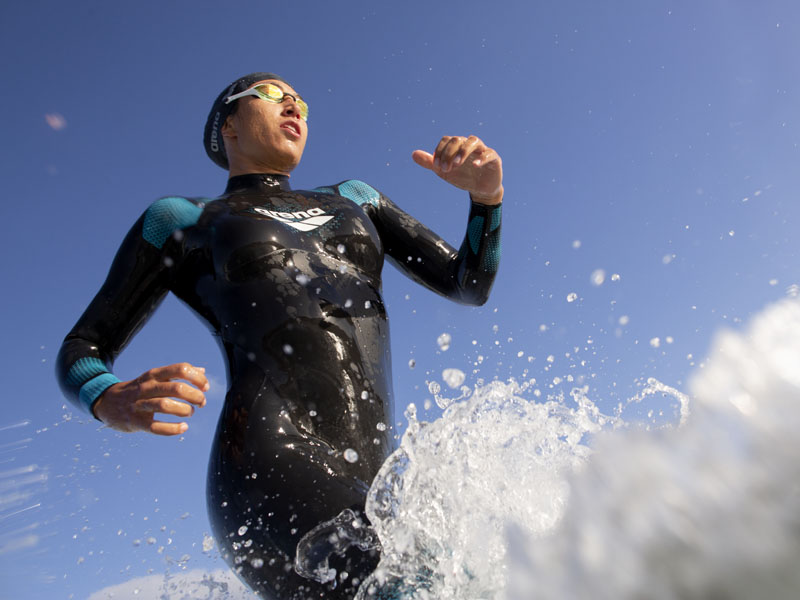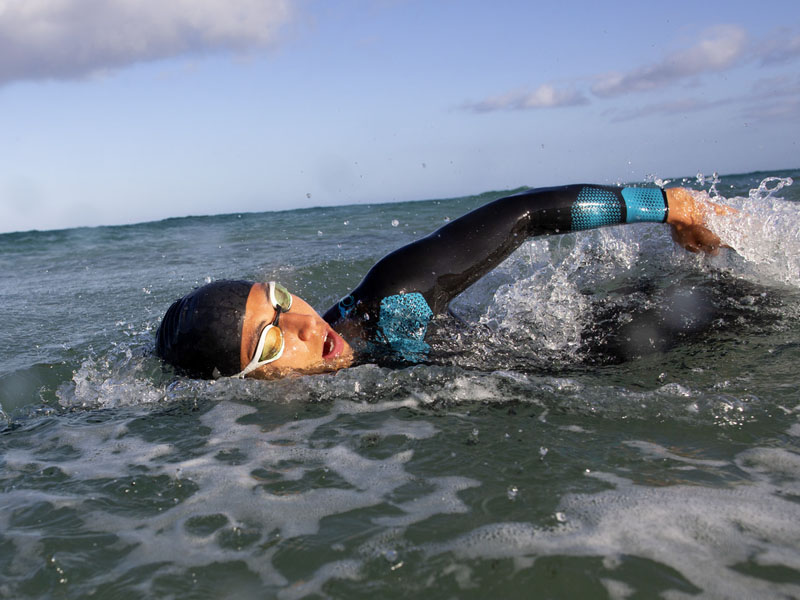6 tips for improving your swim leg
The racing season is almost with us. Lots of you will have spent the winter focusing on how to improve your swimming, but how many of you will really be able to transfer the skills learnt in the pool to your Ironman races? Here are some valuable tips that might help you improve your swim leg in races.
1. Swimming horizontally and keeping your balance. By now you will have realised that you come up against incredibly strong resistance to forward motion in the water. To reduce this resistance to a minimum, it is advisable to be as horizontal as possible in the water. Make sure your head is never held too high, particularly while breathing. Do not over rotate your body, otherwise your arm stroke will be less efficient. Lastly, extend your legs, do not bend your knees too much, and try to completely relax your toes.
2. Do not kick too wildly with your legs. If you have a good swim technique, your leg kick will be a big help. Vice-versa a poor leg kick could slow you down, resulting in excessive oxygen consumption and making you feel more fatigued.
- A good technical tip is to use a pullbuoy to learn the proper body position while training. Once you have learnt the proper position, you can then begin to learn the proper leg movement, possibly using fins to begin with.
3. Pay attention to your technique. Keep your elbow high during the recovery, catch and thrust phases. Keep your arm extended and your elbow high and rotate your body during the recovery phase. At the beginning of the catch, rotate your hips and shoulders downwards to get a better pull. During the pull phase your shoulder and hips will rotate upwards to complete the stroke.
4. Breathe more often. Bilateral breathing is the best method during an Ironman. Bilateral breathing means breathing every three strokes or, in other words, being able to breathe on both sides of your body. This ensures your stroke is more balanced and improves the forward propulsion when swimming. As mentioned above, bilateral breathing allows better balance and, hence, less rotation of the shoulders, meaning greater forward propulsion.
5. Train to improve the skills you will use in open-water swimming, incorporating some basic drills in your training sessions:
- Tarzan drill: freestyle with your head raised. This will help strengthen your neck and teach you how to look for landmarks like buoys.
- Swimming without pushing of the wall at turns: swim long sets (from 400-1000 m) without making normal turns. As you approach the pool wall, turn without pushing off, using just the strength in your arms and legs.
6. Train. Even though the swim leg is considered the least important of the three, it helps to leave the water in good shape. If you get bored training alone, find a group to swim with in the pool. If, on the other hand, you cannot train with a group, have a very definite training plan in mind as you tackle your solo sessions. Incorporate carefully structured sets to break the monotony, varying your speed and distance.
Enjoy your training!









